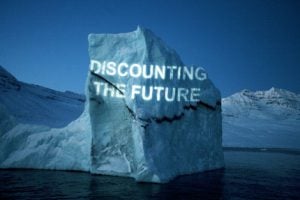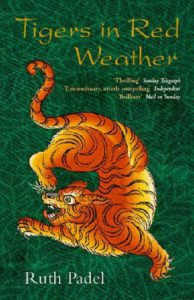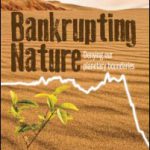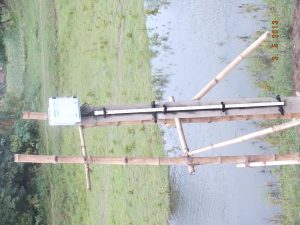Makepeace Hatfield, the heroine of Marcel Theroux’s 2009 novel Far North, is one of the last survivors of a Siberian settlement. Her father was an early settler: an American Quaker who fled a decadent world for a frontiersman’s life. In the Siberian summer he discovered fertile terrain, purple and brown, and water that “heaved with salmon,” as Makepeace recalls. “Nothing I’ve known in the Far North resembles the land of ice that people expected him to find here.”
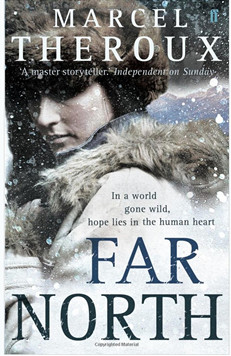
We are in the future, or, at any rate, a future. The settlement has collapsed under the pressure of an influx of starving refugees. Makepeace—a stoic, androgynous woman—forges her own bullets and hunts wild pigs. When she witnesses the crash of a small plane, she sets out on her horse to find the rump of civilization that must have produced it. She is welcomed into a small religious community, then imprisoned at a work camp, and eventually makes her way to a dead metropolis.
Far North, hailed by the Washington Post as the “first great cautionary fable of climate change,” is one of the strongest of a recent crop of similar books, most of which are also post-apocalyptic or dystopian. But the novel is no straightforward eco-parable. Indeed, at one point, Theroux seems to have a little fun with green pieties. In the book, knowledge about the origins of the crisis is fuzzy, but Makepeace’s learned confidant offers an explanation:
“Shamsudin said the planet had heated up. They turned off smokestacks and stopped flying….Factories were shut down….As it turned out, the smoke from all the furnaces had been working like a sunshade, keeping the world a few degrees cooler than it would have been otherwise. He said that in trying to do the right thing, we had sawed off the branch we were sitting on.”
The novel also underscores the ironies of considering global warming an “environmentalist” cause. Today, conservationists rue human ubiquity and the loss of wilderness. Theroux reminds us that what’s finally at stake in our experiment with the climate is human achievement. In Makepeace’s time, wilderness is reclaiming cities; it’s the accumulated knowledge of millennia that verges on extinction. Aviation, for instance: “[T]o turn words and numbers into metal and make them fly—what bigger miracle can there be?” Makepeace marvels. “It’s a kind of heresy to say so, but I think our race has made forms more beautiful than what was here before us.”
Creative responses to climate change
Novelists were slow to take up the subject of global warming. In 2005, Robert Macfarlane wrote an article in the Guardian lamenting the dearth of art addressing the issue. “ [A]n imaginative repertoire is urgently needed by which the causes and consequences of climate change can be debated, sensed, and communicated.”
 In the past few years, that imaginative repertoire has begun to emerge. In addition to Theroux, major novelists including Margaret Atwood, Ian McEwan, and Jennifer Egan have published books that touch on climate change. This year, several new novels make climate change central to their plot and setting: Back to the Garden, by Canadian writer Clara Hume; The Healer, by Finnish suspense novelist Antti Tuomainen; and Odds Against Tomorrow, by Nathaniel Rich, one of the few Americans to contribute to the genre.
In the past few years, that imaginative repertoire has begun to emerge. In addition to Theroux, major novelists including Margaret Atwood, Ian McEwan, and Jennifer Egan have published books that touch on climate change. This year, several new novels make climate change central to their plot and setting: Back to the Garden, by Canadian writer Clara Hume; The Healer, by Finnish suspense novelist Antti Tuomainen; and Odds Against Tomorrow, by Nathaniel Rich, one of the few Americans to contribute to the genre.
Most of the authors seek, at least in part, to warn, translating graphs and scientific jargon into experience and emotion. In Back to the Garden, a small group of close friends—Fran, a short-haired beauty; Elena and her partner, Daniel; and the couple’s two children—live on a mountainside in Idaho. As in Far North, the characters have reverted to a primitive way of life; they hunt with bows and arrows and weave their own clothes. Soon Leo, a former movie star, drifts onto the mountain. The friends set out on a road trip to find family, in a journey that’s part standard post-apocalyptic narrative and part Wizard of Oz.
 Back to the Garden is unabashedly didactic. The promotional material says the novel “presents a frightening and tragic possibility for our future but doesn’t ignore our affirmative connection to nature and other people. The novel attempts to open people’s eyes to the importance of respecting limits, before it’s too late.” When we learn that Leo has lost his brother to dengue fever, the cause is no mystery. As Leo explains, “Warmer temperatures meant mosquitoes began to survive winters, tropical insects migrated northward, and public health and sanitation went away; these things, and polluted water sources, had resulted in increased diseases transported by mosquitoes and other insects.”
Back to the Garden is unabashedly didactic. The promotional material says the novel “presents a frightening and tragic possibility for our future but doesn’t ignore our affirmative connection to nature and other people. The novel attempts to open people’s eyes to the importance of respecting limits, before it’s too late.” When we learn that Leo has lost his brother to dengue fever, the cause is no mystery. As Leo explains, “Warmer temperatures meant mosquitoes began to survive winters, tropical insects migrated northward, and public health and sanitation went away; these things, and polluted water sources, had resulted in increased diseases transported by mosquitoes and other insects.”
Climate dystopia
While Hume uses fiction to bring climate change to life, other writers use climate change to bring their fiction to life. Antti Tuomainen’s The Healer unfolds in a dystopian Helsinki in which the effects of global warming—constant rain, climate refugees, social breakdown—amplify the noir atmosphere. The plot centres on the narrator’s search for his missing wife, a journalist last known to be investigating a killer who calls himself “the Healer.” The Healer targets the corporate executives (and their families) whom he holds responsible for the climate crisis. More than the other books, this one makes clear how the consequences of climate change will be distributed: that is, perversely. The affluent (disproportionate CO2 emitters) have fled north to more bearable temperatures, while the poor squat in the abandoned houses of the rich.

Most climate-change fiction is set, for obvious reasons, in the future. But Ian McEwan’s underrated 2010 novel Solar takes place in the present. The anti-hero, Michael Beard, is a Nobel Prize–winning physicist. He is an absurd figure: an overweight, short, balding philanderer. Though not malevolent, he has no control over his appetites. He coasts on his renown—holding honorary posts, giving speeches, lending his name to institutes—while only sex and food retain his interest. For his latest sinecure, he serves as the nominal head of England’s new National Centre for Renewable Energy. Beard has no real interest in the issue, but through a series of farcical events, he ends up stealing the ideas of an underling. (This young man is having an affair with Beard’s wife; when Beard catches him in a bathrobe, the man slips on a bear rug and dies.) The ideas concern a new approach to solar energy, and Beard uses them to shift his focus to entrepreneurship—to save the planet and make his fortune at once.

While Beard embarks on his solar-energy scheme, his personal behaviour is both literally contributing to the problem (he flies constantly and has become so fat that, on land, only an SUV can comfortably accommodate him) and symbolic of the lack of discipline that has put us in our predicament. As an extremely intelligent creature who exploits those around him and is ultimately self-destructive, he seems to stand in for the entire human species.
Old myths, new narratives
The fundamental story of climate change is simple. Human behaviour provoked a change in the weather, unleashing, among other effects, dangerous storms. This story should sound familiar. It’s one of the oldest narratives in the human repository. The tale of Noah’s ark is just one variation on the ancient flood myth, in which a deity annihilates the human race for its sins.
Climate change, and the emerging fiction addressing it, recalls other myths as well. The plane that is so central to Far North evokes Icarus, who flew too close to the sun and was punished with death for his hubris. The Garden of Eden also comes to mind. Our ancestors were born into a climatic Eden: the Holocene, a geological age uncommonly hospitable to human life. Now we have entered what some scientists are calling the “Anthropocene,” a less congenial epoch in which human activity is the most influential force on earth. The products of our knowledge have evicted us from our climatic paradise—what several of these novels refer to nostalgically as the “old world.”
In his Guardian piece, Macfarlane wrote that the literature of climate change should not be apocalyptic, both because such a scenario was not true to the current science and because environmentalists had been burned before by crying apocalypse. Instead, he wrote, such fiction might require literary languages which are attentive to the creep of change.
The writers who have captured the feeling best are nonfiction authors who simply describe it. For example, Bill McKibben himself, back in 1989, in The End of Nature, wrote of his anguish: “I love winter best now, but I try not to love it too much, for fear of the January perhaps not so distant when the snow will fall as warm rain.” Jon Mooallem, in his new book, Wild Ones, watches a video of the final starvation shudders of a polar bear cub in its altered habitat. Witnessing this death “felt incriminating in the most paradoxical way: I felt unsettled by how much power our species is wielding on the planet, and I also felt powerless.”
But the novels discussed here do something valuable, too. They refashion myths for our age, appropriating time-honoured narratives to accord with our knowledge and our fears. Climate change is unprecedented and extraordinary, forcing us to rethink our place in the world.
Rebecca Tuhus-Dubrow is a writer in Somerville, Massachusetts
A longer version of this article was originally published in Dissent magazine
